Japan
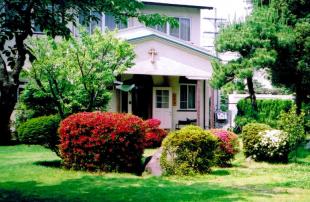
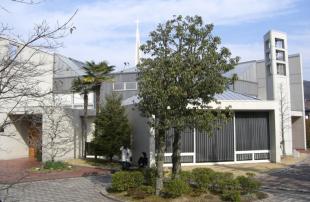
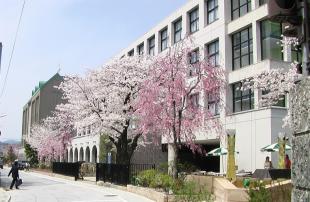
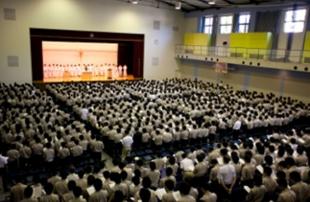
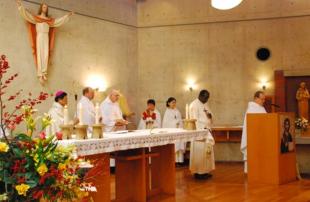
The origin of the community in Japan goes back to 1946 when the Apostolic Delegate of Canada, Mgr. Antoniutti, asked the congregation to open a mission in Japan. A little later, this request, taken up by the bishop of Kyoto, took the concrete form of the foundation of a children’s college. After World War II, Japan was devastated and education was paramount to rebuilding this country.
The first Viatorians arrived in Kyoto in 1948, more precisely in the district of Kitashirakawa. On Dec. 8, 1948, they celebrated Mass in one of the rooms of the first residence. Later, in 1952, the wish to found a college of secondary education was realized; it was named Rakusei, two Japanese characters that signify: Kyoto star.
The parish has grown over the years. The current building is the third and was inaugurated in March 1993. The church was consecrated by the bishop of Kyoto Raymond Kenichi Tanaka. In a country affected by several earthquakes, it was necessary to build a solid and secure building. It was done with the admirable collaboration of all Christians, offering a beautiful and welcoming place to meet and pray, and to fulfill the conditions of security. Its location, near Kyoto University, favors the presence of several young Japanese and foreign researchers living nearby and attending the church; they promote the image of an international family.
The first year, the college began with 88 students. Currently, there are 1,350 distributed in six levels. The characteristic of Rakusei is based on the balance between intellectual activities (classes, conferences), sports (sports clubs) and religious (ceremonies, conferences, volunteering activities). An international orientation has recently been given to the college. Groups of students had the opportunity to visit the Canadian Viatorian Province, study English in Australia and Seattle and also take part in specific courses at the famous Harvard University in Cambridge, USA. Click here
The foundation of Japan is under the jurisdiction of the Province of Canada, but it has always been characteristic of an international community. It has worked with religious and associates from Canada, the United States, Spain, Burkina Faso and of course, Japan.



